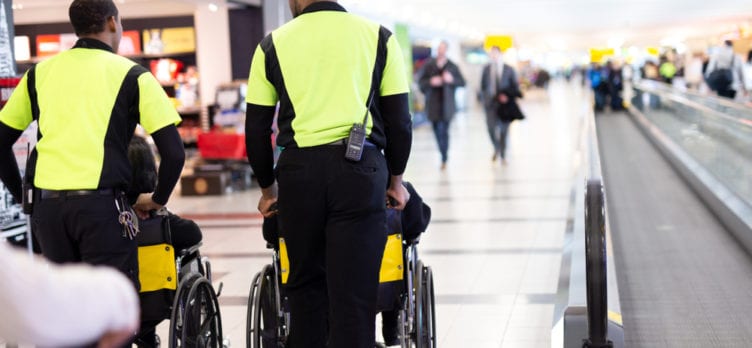NABBW’s 2023 Update on Traveling Safely with a Chronic Illness or Disability
By Mary J. Yerkes and Anne L. Holmes for the NABBW
NOTE: This helpful article originally appeared at NABBW.com in 2009 and was updated in 2019. In 2023, we are happy to again bring it up to date, so that it reflects current disability travel information.
 For the 1 in 2 Americans living with chronic conditions, traveling can be a challenge. Crowded airports, long flights, and public transportation can increase stress and exacerbate symptoms. But by learning to travel smart, you can experience the thrill of traveling, while minimizing your discomfort and stress.
For the 1 in 2 Americans living with chronic conditions, traveling can be a challenge. Crowded airports, long flights, and public transportation can increase stress and exacerbate symptoms. But by learning to travel smart, you can experience the thrill of traveling, while minimizing your discomfort and stress.
Traveling Tips
Here are five sure-fire tips for traveling smart with chronic illness or disability:
Contact your health care specialist or provider four to six weeks prior to departure to discuss your itinerary and request tips for traveling with your condition.
Health care providers are a valuable resource when it comes to tips for traveling with your condition. After my diagnosis of rheumatoid and psoriatic arthritis, I spoke with my rheumatologist to discuss adaptations I could make while traveling. She suggested I add an extra day to my travel plans to allow for time adjustments and jet leg, request a seat on the aisle just behind the bulkhead for more room, and get up frequently to stretch and walk around, if possible. While arthritis has slowed me down while traveling, I still travel regularly and enjoy exploring new cities.
Set realistic expectations for yourself and others.
Acknowledge your limitations and understand that you will need to rest more frequently than your traveling companions. Discuss your needs with your spouse or traveling companion before leaving and schedule rest stops into your day. My husband and I recently traveled to the Eastern shore, where we stopped at a large outlet mall. My husband wanted to look for bargains, but I needed to stop and rest. I spent an hour at a coffee shop reading, while he visited the stores he wanted to. We both got what we needed.
Keep your medications — and oxygen, if you travel with it — handy.
Never pack your medications in bags that you plan to check at the airlines or in difficult places to reach. Keep your medications, including your CPAP machine if you use one, accessible and when possible, carry water with you when traveling to make taking your medication on time easier. I pack my daily medications in small plastic baggies and put them in my purse. Whether I’m on a plane, at a restaurant, or in a taxi, this assures my medications are there when I need them.
With regard to traveling with oxygen, here’s a great article from NCOA.org — the National Council on Aging — regarding Traveling Safely with Portable Oxygen. It offers key points, including:
- How to plan and prepare for long-distance travel if you use portable oxygen
- A complete list of oxygen policies for each specific major air, bus, train, and cruise lines so readers can research for their unique needs
- Safety tips for using and carrying oxygen in each mode of transportation, including rental options
Plan your trip in advance.
You can’t do it all. Decide what’s important to do and see on this trip and save the rest for another time. A good travel guide will help you make thee decisions.
My husband and I traveled from the East Coast to the Seattle for our son’s wedding last weekend. While there were many things I wanted to do while there, I limited my activities to those events associated with the wedding and spending time with my son and new daughter-in-law. Next trip, I’ll plan to see the sights.
Pack a survival pack filled with trail mix, meal bars, a book, and iPod.
Don’t let the inevitable travel delays catch you off guard. With everything you need at hand, delays can be turned into an “unexpected or extra rest break.” Good eating habits affect chronic conditions, so make sure you always keep something with you. The New York Times offers some great suggestions for what to pack.
 Chronic condition need not keep you from living a full and enjoyable life. With a little bit of planning and a “can-do” attitude, you can experience the joy of new adventures.
Chronic condition need not keep you from living a full and enjoyable life. With a little bit of planning and a “can-do” attitude, you can experience the joy of new adventures.
For additional tips on traveling with disabilities or chronic conditions, you’ll want to review The Ultimate Guide to Air Travel with a Disability, a website published by UpgradedPoints.com as well as the TSA website.



Leave a Reply
You must be logged in to post a comment.